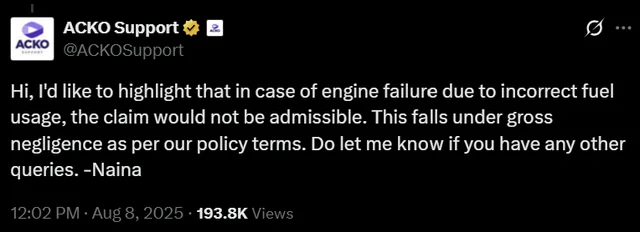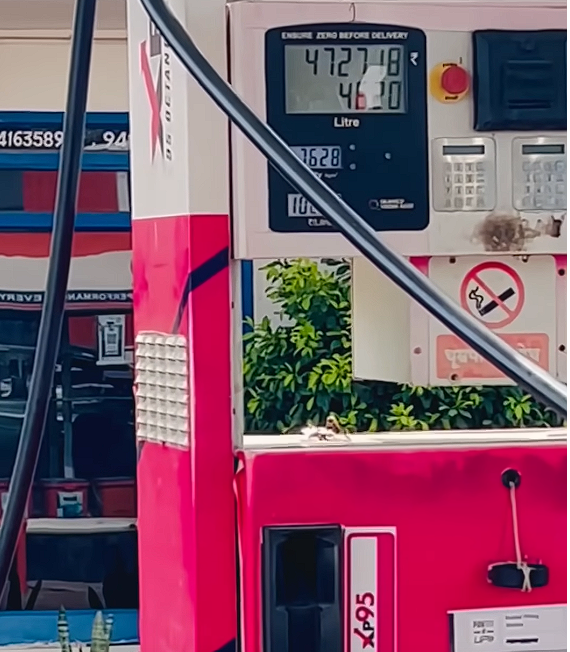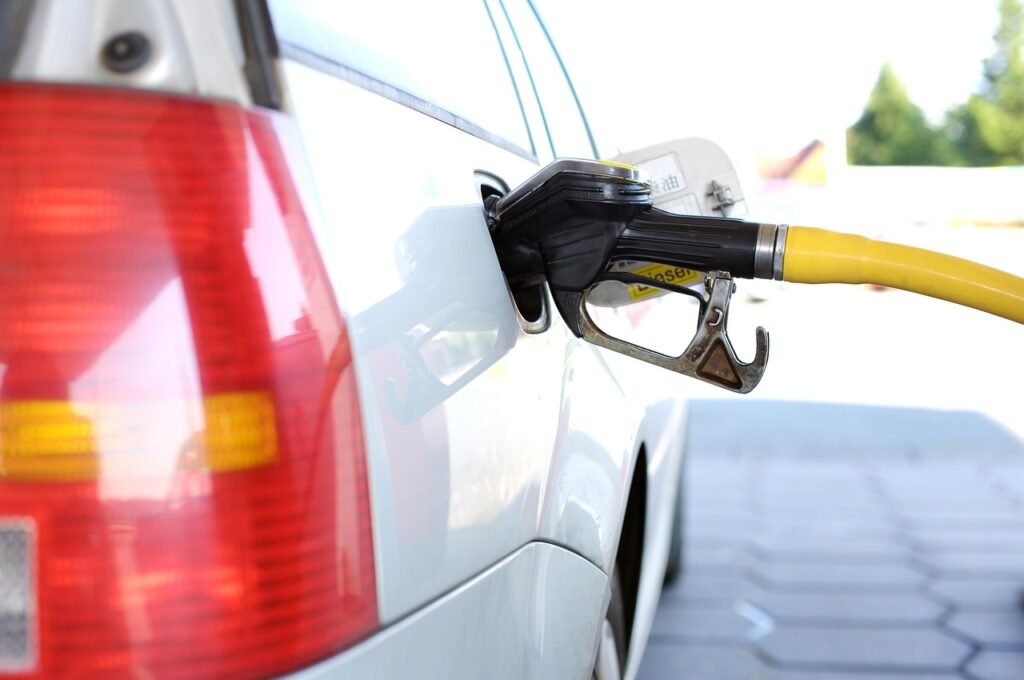The Indian government’s push for E20 petrol—a blend of 20% ethanol and 80% petrol—marks a major step toward reducing dependency on fossil fuels and cutting emissions. While this move is aligned with global sustainability goals, it has also raised concerns among vehicle owners, especially regarding warranty coverage and insurance claims.
Recently, a clarification by Acko Insurance on social media has sparked a heated debate. Many car owners are now questioning whether using E20 fuel in vehicles not designed for it could void their warranty and make them ineligible for insurance claims in case of engine damage.

This article explains what’s going on, what Acko and other insurers are saying, how it can impact your warranty, and what steps you should take before refueling your car with E20 petrol.
What Is E20 Petrol?
E20 petrol is a blend consisting of:
- 20% Ethanol – a biofuel made primarily from sugarcane, maize, or other crops.
- 80% Petrol – the traditional fossil fuel.
Ethanol blending aims to:
- Reduce import bills for crude oil.
- Support farmers by increasing demand for ethanol-producing crops.
- Lower carbon emissions.
The Government of India has been gradually increasing ethanol blending targets—from E5 to E10, and now moving toward E20 by 2025. In many parts of the country, E20 is already available at fuel stations.
The Acko Insurance Statement That Sparked Concern
The discussion gained momentum after a user on X (formerly Twitter) posted a query about insurance coverage in case of engine damage due to E20 petrol. Acko Insurance responded, stating that:
- Engine failure caused by incorrect fuel usage—including using E20 petrol in a vehicle not designed for it—is considered “gross negligence”.
- Such damage is not covered under standard motor insurance policies.
- Engine damage from wrong fuel use is not treated as an accident, so the claim falls outside normal policy terms.
- Roadside Assistance add-on, if purchased, will still provide help (like towing), regardless of the fuel used.
This statement quickly went viral, with many motorists expressing concern about both warranty coverage and insurance protection.
Why Warranty Could Be at Risk
Vehicle warranties are provided by manufacturers, and they include terms about proper usage and maintenance. If your car’s engine is not E20-compatible and you still use E20 petrol, you may be violating those terms.
How it works:
- If your manufacturer specifies that your car is only suitable for E10 petrol and you use E20, the higher ethanol content may cause corrosion, deposit buildup, and reduced engine life.
- In case of related damage, the manufacturer can reject the warranty claim, citing “use of incompatible fuel”.
Example:
If you own a petrol car from 2018, it’s likely designed for E10. Using E20 could damage the fuel pump, injectors, or engine valves over time. Any repair cost would be on you—not covered by warranty or insurance.
Why E20 Can Cause Engine Problems in Older Cars
While newer cars sold after April 2023 are increasingly E20-compliant, older models may face issues such as:
- Corrosion of metal parts – Ethanol absorbs water, leading to rust in the fuel system.
- Degradation of rubber components – Fuel lines and seals may deteriorate faster.
- Deposits in the fuel system – Higher ethanol blends can loosen old deposits, clogging injectors.
- Lower energy content – This may reduce fuel efficiency.
Insurance Industry’s Stand
While Acko’s statement brought the issue into the spotlight, many insurers have similar policies:
- Wrong fuel usage is considered negligence.
- Engine damage from such negligence is typically excluded from standard coverage.
- Some comprehensive policies offer an Engine Protect Add-on, but even these may have clauses excluding coverage for damage due to incompatible fuel blends.
Government’s Position
According to the Petroleum Ministry, E20 fuel is safe for E20-ready vehicles. However, the rollout has created confusion because:
- In many areas, E10 is no longer available.
- Vehicle owners of older cars are unsure about compatibility.
- There is no clear transition period for motorists to adapt.
How to Check if Your Vehicle is E20-Compatible
Before you refuel with E20, follow these steps:
- Check your owner’s manual – Look for fuel compatibility details.
- Check the fuel lid or cap – Some cars have E20/E10 markings.
- Visit the manufacturer’s website – Many brands publish E20 compatibility lists.
- Contact the dealer/service center – They can confirm your car’s compatibility.
Steps to Protect Yourself
If your vehicle is not E20-compatible:
- Avoid refueling with E20 petrol – If unavoidable, consider smaller refills and use fuel additives recommended by your manufacturer.
- Get Engine Protect Add-on – Though it may still exclude incompatible fuel damage, some policies have broader coverage.
- Keep proof of fuel used – If your area only supplies E20, retain fuel bills as evidence in case of disputes.
- Service regularly – This can help detect early signs of ethanol-related wear.
What If E20 Is the Only Fuel Available?
This is the toughest situation for owners of older vehicles. If E10 or regular petrol is unavailable:
- Speak with your dealer about retrofitting or modifying components to handle E20.
- Some aftermarket solutions (like ethanol-resistant fuel lines) exist, but they must be installed professionally.
- Maintain a written record of manufacturer and fuel station communications for potential warranty disputes.
Final Word
The shift to E20 petrol is part of India’s larger environmental and energy independence strategy. However, the transition comes with challenges for vehicle owners—especially those driving older cars. With insurance companies like Acko making it clear that engine damage from wrong fuel usage won’t be covered, and with manufacturers able to deny warranty claims for the same reason, it’s more important than ever to check your vehicle’s fuel compatibility.
In the current scenario, being informed is your best defense. Before you fill up your tank, make sure your car is ready for E20—otherwise, you could face expensive repairs with no help from your insurer or manufacturer.

